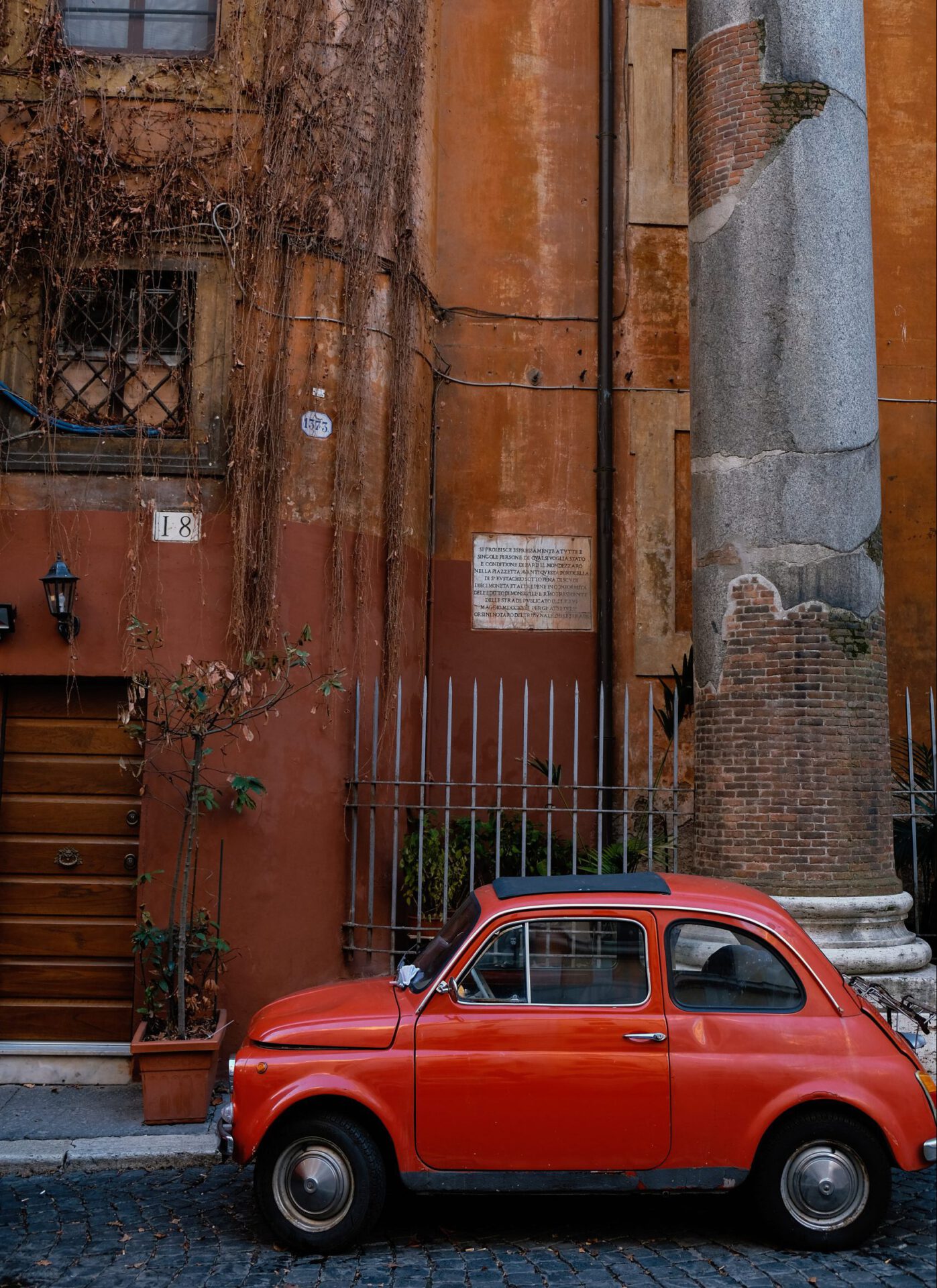There’s no Italian car more iconic than the Fiat 500. True, it may not have the horsepower of a Ferrari or be a headturner like a Lamborghini, but there’s a certain level of affection that comes from seeing it bumble and bounce through the cobblestoned streets of Rome or wind like a toy car down the curving roads of the Positano coastline.
The car, more than any other, has become a historic symbol of Italian culture and style, and it has the cultural credentials to prove it. The Fiat 500 drives Audrey Hepburn and Gregory Peck around in Roman Holiday (1953), and races against Mini Coopers through the streets of Turin in The Italian Job (1969). Madonna dances in a club with the car in the music video for “Hung Up”, and Katy Perry with it in “Last Friday Night”. A photograph of Peter Sellers, hanging out of the sunroof trying to capture his wife Britt Eckland on her Vespa cruising in front of the Colosseo, is world famous. The Cinquecento was even a cover girl, in a 1987 edition of Elle Magazine.
Born in July of 1957, this tiny rear-engine car, designed by Dante Giacosa, came from the need for affordable, practical, and economical transportation in post-war Italy; a need the Fiat 500, also marketed as the “nuova”, quickly satisfied, becoming known as the “people’s car” for its efficiency and size.
Just a little over 2.5 meters long, the two-door, semi-convertible Cinquecento was touted as the first true city car, and anyone who’s attempted to maneuver through the little streets of a Piemontese mountain town or the narrow, “one-way” alleys of Naples with any other automobile will understand why. Originally driven by a 479 cc two cylinder engine that topped out at 85 km/h (53 mph), the car was a bit… underpowered. But with later models, the engine increased in horsepower to satisfy those who wanted a bit more when shifting through the gears, and throughout the car’s first life, from 1957 to 1977, a whole host of models rolled off the production line at the famous Fiat Lingotto factory in Turin:


Photos by Ryan Neevan
Fiat 500 Giardiniera (1960-1977): In 1960, the Fiat 500 Giardiniera, or “Estate” in the UK, was introduced. It was an estate (station wagon) version of the original 500, with a rear engine and an extended roofline to create more interior space and cargo room.
Fiat 500D (1960-1965): The 500D was an updated version of the original 500, featuring a more powerful engine and improved interior comfort.
Fiat 500F (1965-1973): The Fiat 500F was one of the most popular and long-lived iterations of the original 500. It received some design updates, including new bumpers, and was a beloved choice for city driving.
Fiat 500L (Lusso) (1968-1972): The 500L, or Lusso, featured a more luxurious interior and a larger, more powerful engine, making it a more comfortable and versatile option.
Fiat 500R (1972-1975): The 500R was the last iteration of the original 500, featuring further design enhancements, such as a new dashboard and door panels.



During this period, other companies crafted performance oriented versions of the Cinquecento–such as the Abarth 695 SS, which used the 500 as the base but upgraded the mechanics so that the car could reach speeds of 140 km/h (87 mph). Another famous variant is the Jolly Ghia, built by Carrozeria Ghia, featuring an open-air, doorless design and custom wicker seats–the perfect beach car. “L’Avvocato”, Chairman of Fiat, Gianni Agnelli himself had his very own Fiat 500 Spiaggina that was unlike any other. The one-off Fiat 500 was tailored exactly to his specifications with an elongated wheelbase to shuttle his aristocratic and celebrity friends to and from Villa Leopolda on the French Riviera.
By the 1970s, however, safety and emissions standards in Europe and other markets had become more stringent, and the Fiat 500, with its tiny size and older technology, didn’t meet the new regulations. Buyers, as well, were looking for larger, more comfortable cars, and compact and subcompact cars were losing popularity in favor of more sizable vehicles. Fiat made the decision to discontinue the original Fiat 500; although a pragmatic decision to transition to more modern and market-appropriate vehicles, it marked the end of an era.
The spirit of the Fiat 500, however, was revived in 2007 when Fiat introduced a modern version of the classic city car that incorporated the iconic design elements while meeting contemporary standards. Retaining the iconic round headlights and compact size, the second iteration of the Fiat 500 is available in various versions, including a convertible and an electric version, the Fiat 500e. The reboot was as successful as that of Star Trek, and these little cars pepper Italy’s roads, from the picturesque alleyways of Trastevere to the lungomare of the Ligurian coastline. (Makes sense, considering well over 6 million models of this car have been sold.) A White Nuova 500 has become my neighbor, always parked in the same spot just around the corner.













